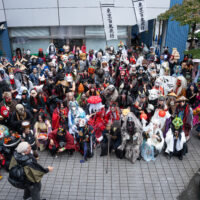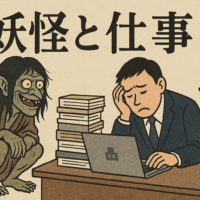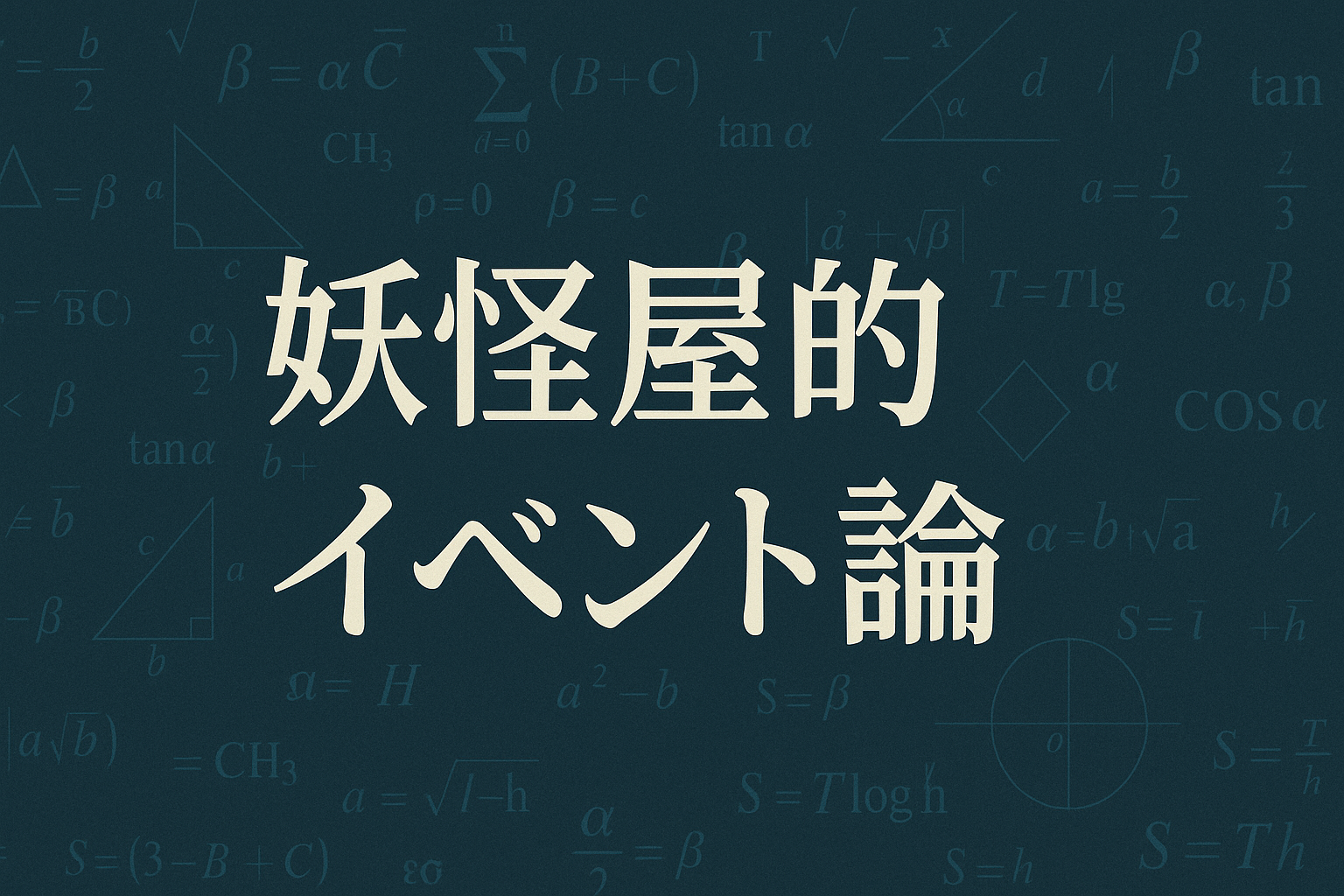
[Urban legend] Teketeke word association game
Hello. I'm Keichan and I live in Hokkaido.
Previously, we introduced Koropokkur and Mintuchikamuy, two yokai associated with Hokkaido that have close ties to the Ainu.
This time, we will introduce the monsters that appear in urban legends related to Hokkaido,Teke teke"We will introduce "
*As the hot days continue, here are some images of winter in Hokkaido to help cool you down a little.
This photo was taken from inside a train during a whiteout caused by a heavy snowstorm.

Teketeke is a ghost with only the upper body, missing the lower half. It was named after the "teketeke" sound it makes when moving around using both arms.
The story goes that in the north, a woman fell onto the tracks, was run over by a train and had her upper and lower halves cut off, but the extreme cold caused the ends of her blood vessels to freeze, stopping the bleeding, and she lived for a while, searching for her legs, but then died in agony. After her death, the woman became a ghost and crawled around looking for her legs, and will come hunting for the legs of anyone who hears this story.
The stage is,Muroran City, HokkaidoIt is said that the story is based on an actual railroad crossing accident that occurred in the film.
As I wrote above as a "ghost," strictly speaking it may not be categorized as a yokai, butHell Teacher Nube" and the movie "School Ghost StoriesIt also appears in "The Legend of 1900" and in 2009 a movie titled "Teke Teke" was released about it, making it a major urban legend.
By the way, the above phrase "they will come to those who hear this story and hunt their legs" isSacchan" It is also seen in the urban legend.
"Sachiko" is a famous children's song written by Sakata Hiroo, but there is an urban legend that there is a hidden fourth verse, and anyone who hears it will be killed by Sachiko, who will slash their leg.
This is the anime "Ponkickies" from the morning children's programScary School Rumors: Hanako-san Has Come!!"It was also broadcast as an episode of the TV show "Sachiko's Rumors," traumatizing many children in 1994.
※The "Hanako-san" anime has been called a trauma-producing machine,Monster Tonkaraton" These things also instilled trauma in my mind as a child.
Also, as for a monster with only the upper body, there is the "PenanggaranThere is a monster called ".
In Borneo, where the borders of Indonesia, Malaysia and Brunei are crossed,PontianakIt is called " and is said to fly around the night sky with only its head and its internal organs dangling, sucking human blood.Gasu"It is also sometimes called "
Although there are differences from Teke Teke in terms of being a vampire and the circumstances of its creation, there are some common keywords between the two, namely "only the upper body" and "female."
There are many legends in Kyushu, Japan.IsojoHowever, she is often depicted with the upper half of a beautiful woman and the lower half of a snake. Only the upper half of her body is visible, while the lower half is vague and unclear, like a ghost. She is also said to suck the blood of people.
In terms of "blood-sucking," it has something in common with Pontiana.
A monster similar to Iso Onna.Wet WomanThere is also a monster called Nure-onna. Nure-onna are often depicted with a human head and a snake underneath. They are also depicted holding a baby,UshioniIt is said that they sometimes appear as minions of the
mermaidThese women are similar to sea lion girls in the sense that they have a beautiful upper body and a scaly lower body.
Yokai may be connected in some way; they have similar story endings despite being from different eras or motifs, they have similar appearances and characteristics, and there are similar legends in different parts of the world.
Shigeru Mizuki's "The Thousand Monsters TheoryThis also ties into the theory that yokai from all over the world share common appearances and other characteristics, and that the world's yokai can be narrowed down to 1,000 types.
Yokai are not unchanging, and new ones are created every day, but in reality, they are just a repetition of the same things and there is nothing new about them.
The other day was the anniversary of the end of the war, and I hope that humans will not repeat the same mistakes.
Text and photos by Keijiro Watanabe
References: "A Tour of Asia's Monster Islands" (Takumi Hayashi, Kobunsha Bunko), "The Definitive Japanese Monster Encyclopedia: Monsters, the Otherworld, and Gods" (Shigeru Mizuki, Kodansha Bunko), "The Japanese Monster Encyclopedia" (Shigeru Mizuki, Kenji Murakami, Kadokawa Bunko)

■ Keishiro Watanabe (Kei-chan)
Born in Asahikawa, Hokkaido. Graduated from the School of Human Sciences at Waseda University. An independent researcher of monsters.
He currently splits his time between Sapporo, Hokkaido, and Tokyo, and works as a management and IT consultant, but he studied folklore and cultural anthropology at university, and continues to study yokai as his life's work.
I am currently writing articles about monsters associated with Hokkaido, where I currently live, as well as current news about business and economics.
Twitter:https://twitter.com/keishiro_w







No comments yet.